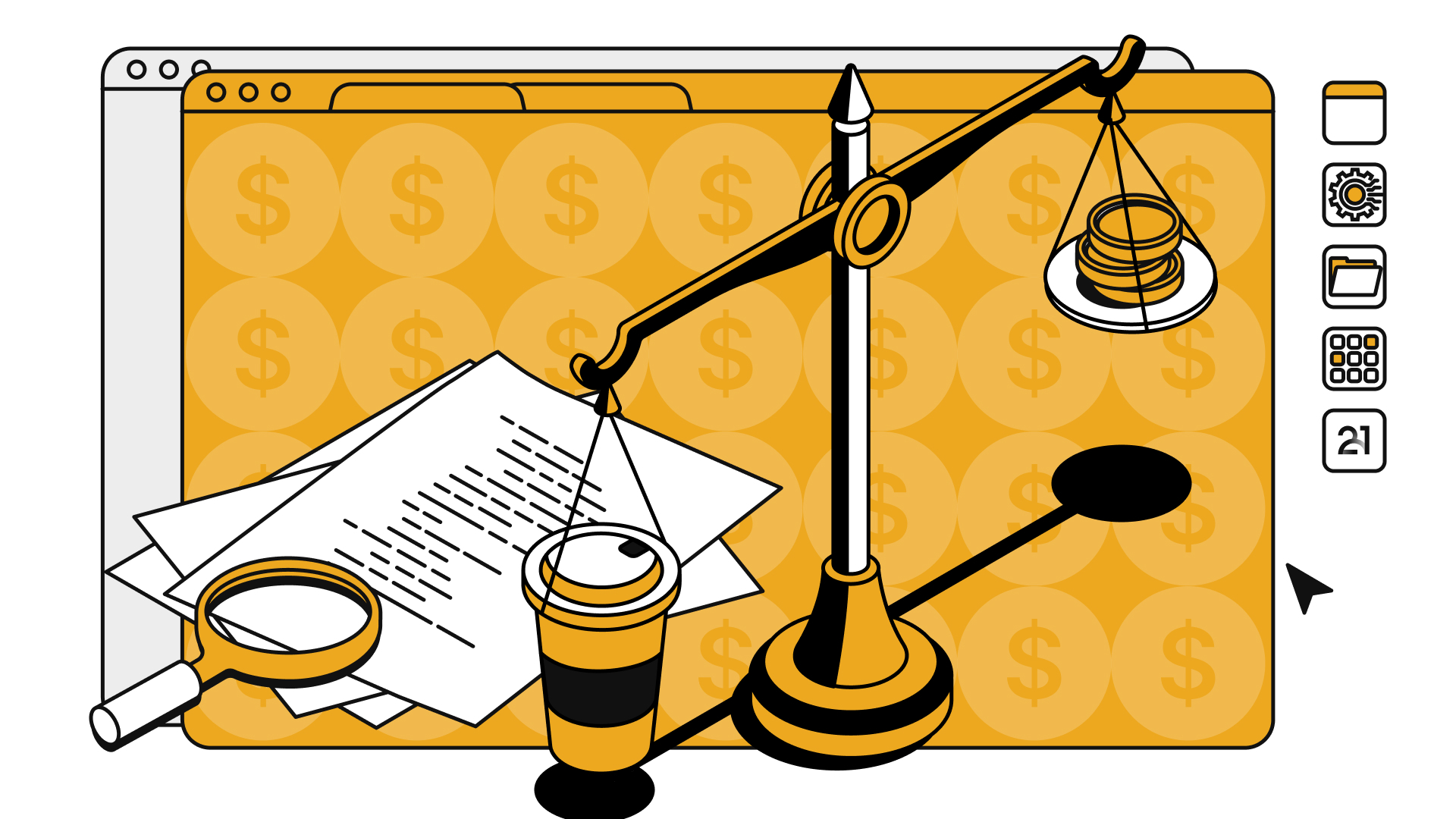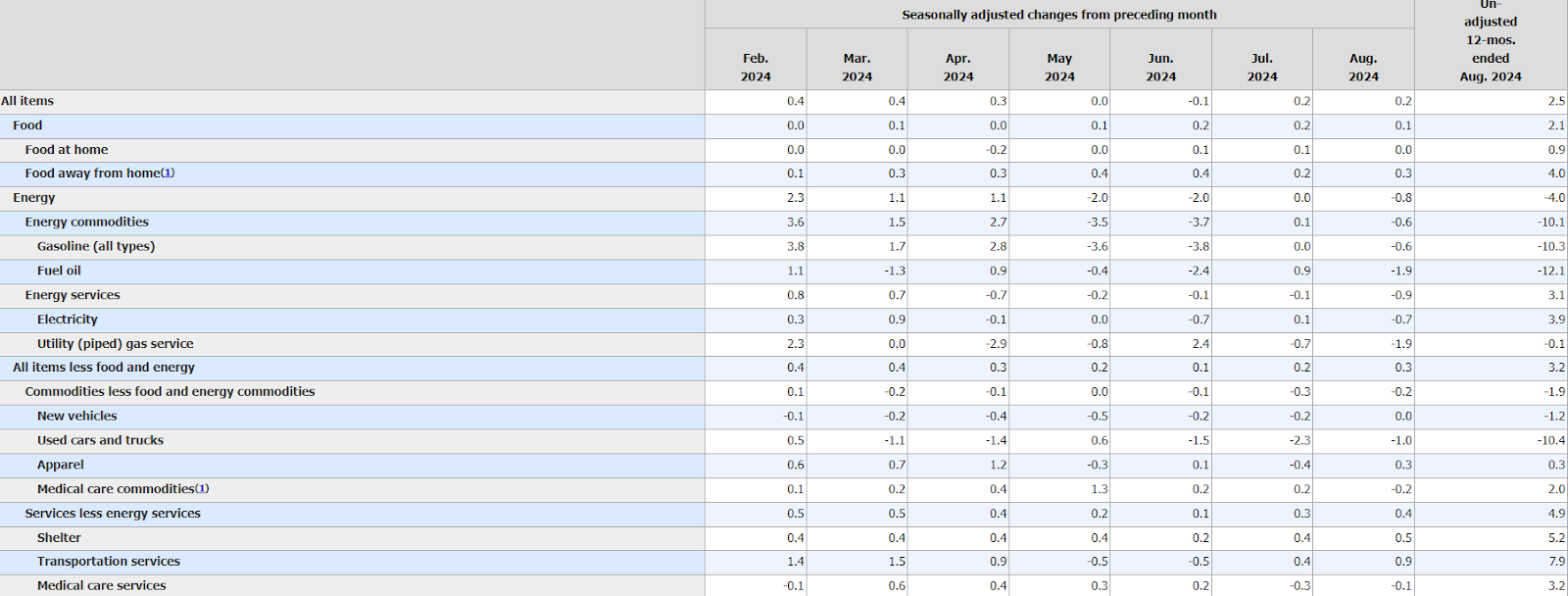
The Federal Reserve is widely expected to cut interest rates by 25 basis points (bps) in response to moderating inflation and slowing job growth. Recent CPI data, showing inflation easing to 2.5% year-over-year, with a 0.2% monthly increase that met expectations—the lowest in over three years—alongside core inflation cooling to 3.2%, has bolstered the case for a rate cut. Additionally, the latest nonfarm payroll report, revealing weaker-than-expected hiring and downward revisions to June and July job numbers, further supports the need for more accommodative monetary policy to sustain economic growth. With these indicators, the consensus for a 25 bps cut is growing.
However, a larger 50 bps cut is not entirely off the table. Such an aggressive move could signal deeper economic concerns, potentially setting off alarm bells for investors. A 50 bps cut would likely be interpreted as an indication that the Federal Reserve sees more significant vulnerabilities in the economy, which could unsettle markets despite the short-term boost in liquidity it might provide.
Last week’s CPI data further highlighted this economic shift. While core inflation remained elevated, signs of cooling strengthened expectations of a rate cut. The anticipation of an impending cut triggered a rally across risk assets, with Bitcoin and Ethereum leading the way, surging 4% and 3%, respectively, by Friday. This uptick followed a dramatic shift in market sentiment, with the odds of a 50 bps rate cut jumping from just 14% to a 50/50 chance, according to the CME FedWatch Tool. Whether the Fed opts for a moderate or aggressive cut, the market response underscores how closely tied asset prices are to monetary policy expectations.
Traditional markets also responded positively, with the S&P 500 rising over 4% for the week and the Nasdaq climbing even higher, up more than 6%. Meanwhile, gold, often seen as bitcoin’s physical analog, ended the week up over 3%. The market's broad rally highlights growing optimism toward risk assets as the prospect of looser monetary policy becomes more imminent.
Key Drivers of CPI Movement
To understand the key components driving August’s CPI data, it’s essential to break down the main categories contributing to inflation. The following sections highlight the significant drivers, including shelter, food, energy, and core CPI, which excludes volatile items like food and energy, offering a clearer picture of what’s keeping inflation elevated.
Shelter: The primary driver of inflation in August, rising 0.5% for the month and 5.2% year-over-year, making up over 70% of the increase in core inflation. The persistent rise in rent and owners' equivalent rent (OER) has been one of the key factors behind the stickiness in inflation.
Food: Increased 0.1% in August. The "food away from home" category rose by 0.3%, while "food at home" remained unchanged. Year-over-year, food prices increased by 2.1%, with notable rises in meats, poultry, fish, and eggs (+3.2%) but decreases in categories like cereals and bakery products (-0.3%).
Energy: Energy prices fell by 0.8% in August, led by declines in gasoline (-0.6%) and electricity (-0.7%). Year-over-year, energy prices dropped 4.0%, with gasoline down 10.3% and fuel oil down 12.1%, contributing significantly to the overall decline in the energy index
Core CPI (Excluding Food and Energy): Key categories that saw increases in August include shelter, airline fares (+3.9%), motor vehicle insurance (+0.6%), and education.

Source: U.S. Bureau of Labor Statistics
Bitcoin’s Reaction to CPI & Rate Cut Expectations
Bitcoin’s price movements in response to CPI data are closely tied to liquidity and interest rate dynamics. A potential rate cut would boost market liquidity by lowering borrowing costs, encouraging investment in high-risk assets like Bitcoin. Historically, Bitcoin thrives in such environments, as investors flock to speculative assets for higher returns. Moreover, a weaker U.S. dollar, often a consequence of rate cuts, further enhances Bitcoin’s appeal as a store of value. In this context, investors seem to be anticipating a weaker dollar, which is pushing Bitcoin’s price higher.
The expectation of a rate cut has also driven increased demand for risk assets across the market. As inflation cools, the Federal Reserve appears closer to ending its tight monetary policy, boosting confidence in assets like Bitcoin. Given Bitcoin’s volatility and potential for outsized returns, both institutional and retail investors are drawn to it, anticipating that looser monetary conditions could further accelerate its price growth.
Looking at data from 2019 to 2024, Bitcoin and the Nasdaq-100 (QQQ) both demonstrate a strong sensitivity to monetary policy shifts. During periods of low interest rates, such as in 2020-2021, Bitcoin surged from $6,589 to over $59,000, while QQQ rose from $182 to $387, driven by abundant liquidity and investor appetite for risk. However, as the Fed raised rates to combat inflation in 2022, both assets saw sharp declines. Despite sustained high rates in 2024, Bitcoin and QQQ have rebounded, reflecting market optimism around future rate cuts as inflation shows signs of cooling. This suggests both Bitcoin and tech stocks remain highly responsive to shifts in liquidity and monetary policy expectations.
The chart below vividly illustrates the relationship between Fed funds rates (left axis) and the normalized prices of BTC and QQQ (right axis). Following the COVID-19 pandemic, when the Fed slashed interest rates to near zero and initiated quantitative easing, both BTC and QQQ saw significant rallies due to increased liquidity in the system. However, once the Fed began tightening monetary policy by raising interest rates, both assets experienced sharp declines, reflecting their sensitivity to reduced liquidity and higher borrowing costs.
It’s important to note that, while the data is normalized for comparison, Bitcoin's price actually increased over 10x during this period, whereas QQQ only went up about roughly 3x. The normalization gives the impression that QQQ saw similar or even greater growth, but in reality, Bitcoin significantly outperformed QQQ in absolute terms over the same timeframe.

Source: 21Shares and Data from Yahoo Finance
Last week's CPI data marked a pivotal moment in the financial markets, with inflation easing to its lowest level in over three years. This decline has heightened expectations for a Federal Reserve rate cut, leading to a surge across risk assets, including Bitcoin and Ethereum. As market participants price in a more accommodative monetary policy, both digital assets and traditional assets like tech stocks have rallied on the anticipation of increased liquidity. This underscores how inflation and monetary policy shifts shape asset prices, particularly in risk assets like Bitcoin, which thrives in periods of abundant liquidity. With inflation cooling, the Fed’s potential shift from its tightening cycle could further boost these trends, highlighting the link between monetary conditions and risk asset performance.
Bitcoin's historical performance shows that it excels in low-rate environments due to increased liquidity. However, its ability to rebound during tightening cycles, such as in 2022, underscores its adaptability. This resilience makes Bitcoin a valuable component in a diversified portfolio, offering both growth potential in times of ample liquidity and protection against inflation. Its performance across various interest rate environments solidifies its growing role in modern investment strategies.


.svg)



_logo.svg)

.svg.png)